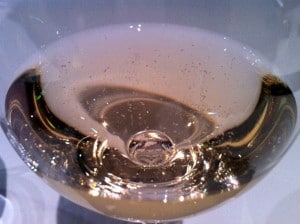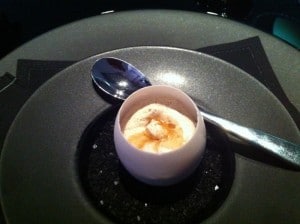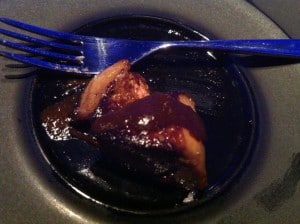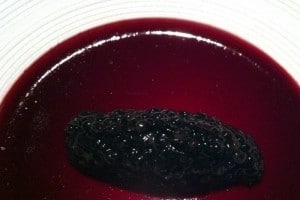2003 – the season
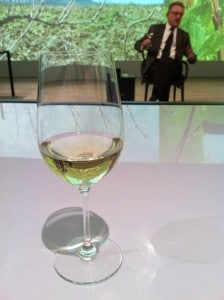 Everyone knows that 2003 was an exceptionally hot year in Europe. Janet and I spent a small part of that summer working in the large garden of friends and found ourselves having to adopt habits more typical of Mediterranean countries – get up early and work outside until late morning, have a long lunch break, and resume the campaign in the early evening. In the wine world, after the great success of the much more typical 2002 vintage in Champagne and elsewhere in France, the question was could great wine be made in the hot year of 2003? Nine years on at the launch of the 2003 Dom Pérignon, chef de cave Richard Geoffrey, was, unsurprisingly, upbeat: yes, we did make the 2003, and we always thought we would – it is like 1947, 1959 and 1976 … Unfortunately, he did not bring along a bottle of any of these vintages to prove his point!
Everyone knows that 2003 was an exceptionally hot year in Europe. Janet and I spent a small part of that summer working in the large garden of friends and found ourselves having to adopt habits more typical of Mediterranean countries – get up early and work outside until late morning, have a long lunch break, and resume the campaign in the early evening. In the wine world, after the great success of the much more typical 2002 vintage in Champagne and elsewhere in France, the question was could great wine be made in the hot year of 2003? Nine years on at the launch of the 2003 Dom Pérignon, chef de cave Richard Geoffrey, was, unsurprisingly, upbeat: yes, we did make the 2003, and we always thought we would – it is like 1947, 1959 and 1976 … Unfortunately, he did not bring along a bottle of any of these vintages to prove his point!
But it was not just the heat that made 2003 a very demanding year. The season started with severe spring frosts which led to a loss of viable fruit buds so that in parts of the Côte des Blancs eventual yields were down by up to 75% at 20 hectolitres per hectare. As a result of this and the summer heat, there was a very small, fast ripening crop. In line with their usual practice, the ripeness of the fruit was carefully monitored in the final weeks of the year. As the thermometer reading soared above 40°, the vines shut down, so no further sugars were made, but the phenolic ripening of the skins and seeds continued. As the winemaker told his story he got limited sympathy for having to interrupt his holiday in San Tropez in order to return to the Champagne area for a harvest which started on 25 August, at the time only the second-ever August harvest since 1822. There were many technical challenges for wineries more used to dealing with the harvest of a cool and damp climate – the temperature of the grapes, the choice of when to pick, issues to do with skin contact and then clarification – but they were by no means insurmountable. It was fine if you were open-minded enough, says Geoffrey with a knowing smile. The challenge in winemaking was to turn strength into intensity.
2003 – the wine
The 2003 wine is remarkable if unusual. It starts with a fine floral note but this quickly gives way to a range of components – ripe if muted exotic fruit, honey, currently noticeable oak, some herbiness, an intriguing bitterness and a notable minerality. The palate is currently moderately intense and the acidity, not surprisingly given the heat of the summer, very low by Champagne standards. If the mark of outstanding wine is its complexity, then this stands out – even if it is right up one end of the spectrum for cool climate wine. Richard Geoffrey is adamant that there is no basis for the commonplace that wine needs elevated acidity to age well. It is the flavour intensity that matters. He is sure that the 2003 will age for decades … ending the debate by his assertion that Dom Pérignon 1976 is now a monument!
2003 – the colours
So much for the season and the wine, how do Dom Pérignon wish to present the wine? After the introduction and simple tasting we were treated to an interactive, almost theatrical experience. In darkened rooms – DP believes in the eternal chicness of black – we are assigned a sommelier and a tasting bar, and led (very willingly) through the colours of white, gold, hibiscus red and blue-black … four colours, four micro dishes with exquisite tasting combinations. Let’s do the photoblog first:
You can’t accuse of Dom Pérignon or their chefs of not trying! This was a spectacular line-up of colour, the non-colour of black and flavours. If the idea was to broaden our concept of ‘what goes’ with vintage Champagne, it certainly worked. For me the most remarkable combination with the wine was the very first – a cream and egg yolk ‘egg’ with cinnamon, coarse black salt and just a touch of the luxuriant sweetness of maple syrup. In a ‘like with like’ match, the indulgently rich texture of the dish brought out the richness of the wine, cream meets cream, while in a cross current, the cinnamon brought out the fruit and the whole was livened up with the hit of salt. This was more than a taste, it was an unfolding series of rich textures punctuated by hits of cinnamon, salt and sweetness. Remarkable.
The two middle dishes, were very good, but the tasting-wine combination was not on the same level. In the gold dish, the La Mancha saffron was certainly warm and powerful and the Livorno risotto rice, called Acquarello, holds its marked firmness while being cooked. The dish was finished off with the intense bite of four-year-old Parmesan. Despite being a classic combination, I felt the dish stood side by side with the wine. Similarly with the red number: all the fireworks were from the low salt farmed caviar from Aquitaine on its bed of hibiscus reduction, rather than its interplay with the wine. However, the textural pyrotechnics returned with the final ‘black’ dish, foie gras and a 40-ingredient mole sauce, including the key contributions of chocolate and mild chilli. Whatever the colour, richness is the key to 2003 Dom Pérignon.



